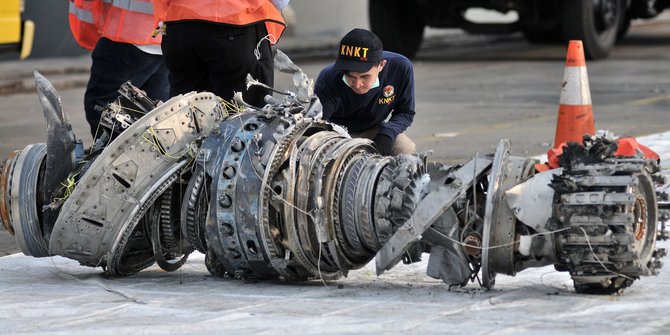
One hundred and fifty-seven people were killed in the crash of an Ethiopian Airlines Boeing 737 MAX Sunday. The airliner en route from Addis Ababa to Nairobi slammed into a plateau near the town of Bishoftu southeast of Addis creating a crater that leaves little of the airplane intact. It suggests the force with which the airliner hit the ground.
“You can look at the accident site and make a couple of guesses from the gouge in the earth; this airplane was out of control when it hit the ground,” said John Gadzinski, a 737 captain and air safety specialist. It was, he suspects, “flying high speed and out of control.”
Airline CEO Tewolde GebreMariam visited the site about 30 miles from Bole International Airport in a valley some 6-thousand feet above sea level. He told reporters some of what the airline knew so far: that shortly after takeoff the pilots reported difficulty to air traffic controllers and requested a return to the airport, which was granted. The plane crashed some minutes later.
Following so closely the crash of Lion Air 610 last fall, even people who are normally circumspect are wondering if the two fatal crashes in two brand new airplanes in the span of 4 months might indicate a problem with the Boeing MAX.
![]() Data from flightaware.com shows the Ethiopian airplane climbed and descended several times before tracking was lost due to the airplane’s low altitude over the mountainous terrain.
Data from flightaware.com shows the Ethiopian airplane climbed and descended several times before tracking was lost due to the airplane’s low altitude over the mountainous terrain.
The unexpected repeated change in altitude on the Ethiopian flight is similar to the flight profile of the 737 MAX in the Lion Air disaster. In that accident shortly after takeoff from Jakarta on October 29, 2018, the pilots struggled to gain altitude and were unable to maintain control of the airplane’s downward pitch. Boeing determined that a faulty angle of attack indication “can cause uncommanded nose down stabilizer trim movements” without the pilots’ input.

Boeing had installed software on the MAX, known as MCAS for Maneuvering Characteristics Augmentation System as part of its Federal Aviation Administration certification. The modification was related to the use of new, larger engines on the MAX. Whether the MCAS system has any role to play in the Ethiopian accident is yet to be seen. It is being discussed once again because of the initial similarities between the two accidents in which it appears pilots were unable to control an airplane that wanted to nose over.
Sometimes when new airplane models enter service there can be accident clusters. These clusters can be attributed to the time it takes for airlines to adapt to new operating and maintenance practices and new technology. We’ve seen this over the years as the industry transitioned from propeller to jetliners and then as jetliners became digitized and automated. The DC-8, the DC-10 and the Airbus A320 all experienced safety learning curves following their introduction into service. The grounding of the 787 Dreamliner due to the instability of its lithium-ion battery is the most recent example.
What makes the MAX different is that it is ostensibly not a “new model” airplane, and in fact as this article in The New York Times suggests, Boeing worked hard to sell the airplane as a newer better version of its reliable 737 workhorse, without ever explaining the new MCAS system to pilots as I reported in here.
Even before Sunday’s Ethiopian Airlines crash, the consequences of this certification sleight of hand was sure to be part of the official probe in Lion Air 610. Now with another MAX having slammed to earth killing citizens from 35 different countries, the whole world awaits the results.

Author of The New York Times bestseller, The Crash Detectives, I am also a journalist, public speaker and broadcaster specializing in aviation and travel.









While it’s troubling that current North American Max operators are saying that their fleet has been operating with complete safety , so far, as justification for continuing into the unknown…A couple comments from American and Southwest are even more concerning. American said our pilots are the “best” and Southwest had a similar comments that their Max pilots can deal with the problem should it arise. No one knows exactly what the extent of the problem is, however profound arrogance that a certain pilot group as a whole is the best and can deal with the situation when others could not is almost as troubling as the concept that its ok to dispatch an aircraft knowing there could be a problem but I’m sure the crew can handle it.